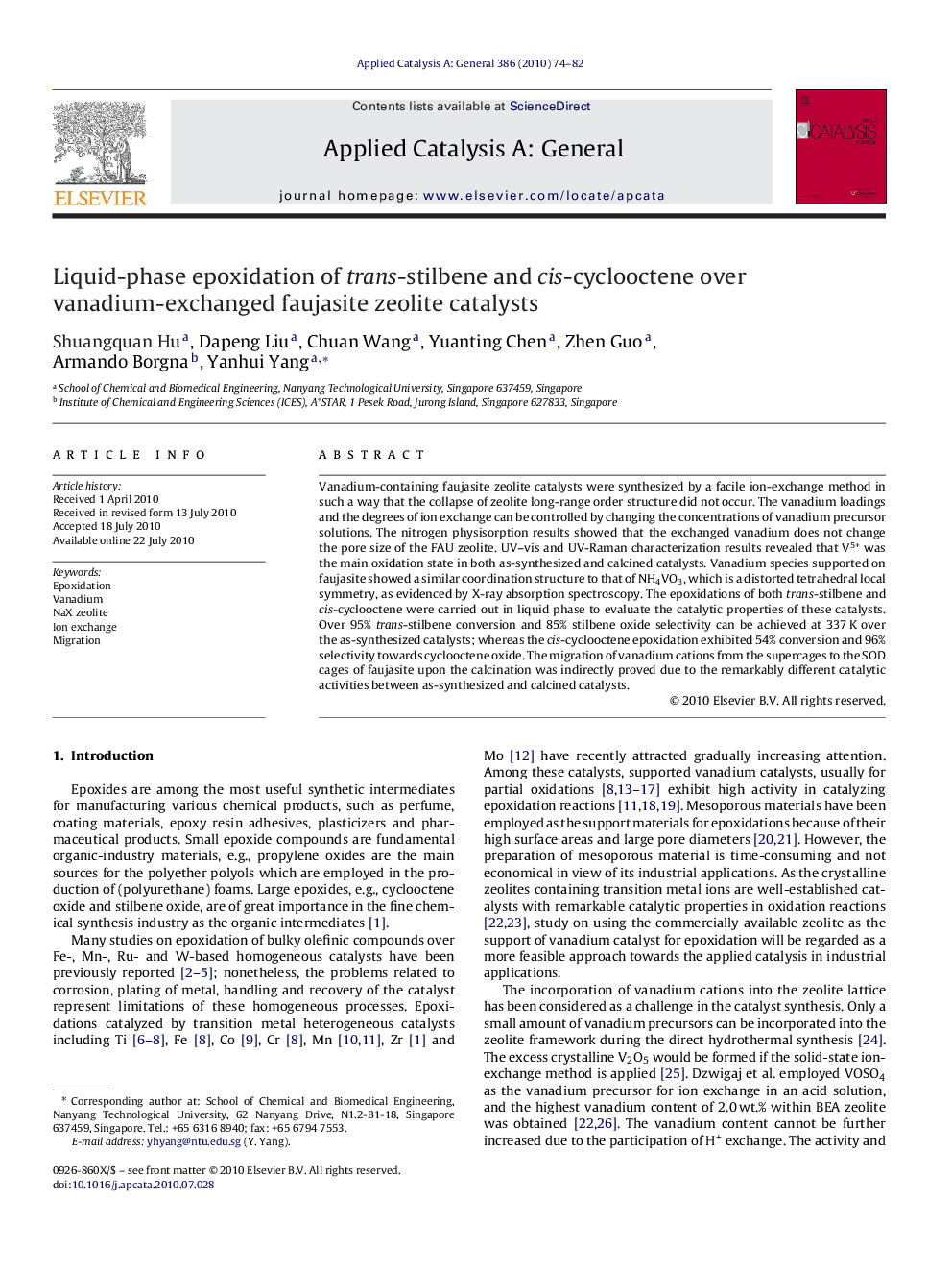| Article ID | Journal | Published Year | Pages | File Type |
|---|---|---|---|---|
| 41909 | Applied Catalysis A: General | 2010 | 9 Pages |
Vanadium-containing faujasite zeolite catalysts were synthesized by a facile ion-exchange method in such a way that the collapse of zeolite long-range order structure did not occur. The vanadium loadings and the degrees of ion exchange can be controlled by changing the concentrations of vanadium precursor solutions. The nitrogen physisorption results showed that the exchanged vanadium does not change the pore size of the FAU zeolite. UV–vis and UV-Raman characterization results revealed that V5+ was the main oxidation state in both as-synthesized and calcined catalysts. Vanadium species supported on faujasite showed a similar coordination structure to that of NH4VO3, which is a distorted tetrahedral local symmetry, as evidenced by X-ray absorption spectroscopy. The epoxidations of both trans-stilbene and cis-cyclooctene were carried out in liquid phase to evaluate the catalytic properties of these catalysts. Over 95% trans-stilbene conversion and 85% stilbene oxide selectivity can be achieved at 337 K over the as-synthesized catalysts; whereas the cis-cyclooctene epoxidation exhibited 54% conversion and 96% selectivity towards cyclooctene oxide. The migration of vanadium cations from the supercages to the SOD cages of faujasite upon the calcination was indirectly proved due to the remarkably different catalytic activities between as-synthesized and calcined catalysts.
Graphical abstractFigure optionsDownload full-size imageDownload high-quality image (84 K)Download as PowerPoint slideResearch highlights▶ Vanadium supported zeolite catalysts were synthesized by an ion-exchange method. ▶ High conversion and selectivity were achieved over the catalysts in epoxidation. ▶ Migration of vanadium from the supercages to the SOD cages was indirectly proved.
